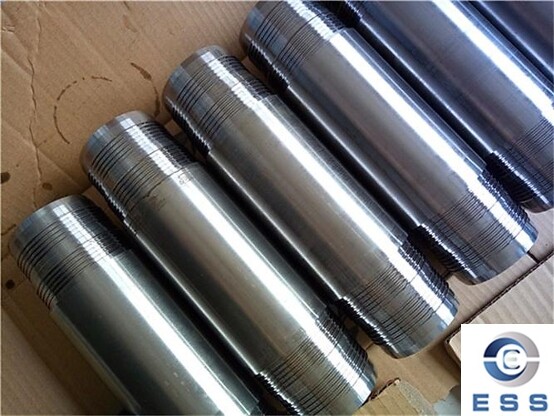The
tubing pup joints are pipe fitting for
connecting tubing, which is mainly used in the drilling, oil production and
transportation processes of the oil and gas industries. It is characterized by
a short length (usually 1-2 meters), a large diameter (generally 2-6 inches),
and a thin wall thickness (generally 4-12mm).
The
tubing pup joint plays an important role in the oil and gas industry, and is
mainly used to connect and assemble downhole pipe strings. They usually have
different lengths, such as 0.25 meters, 0.5 meters, 1 meter, 1.5 meters, etc.
These lengths enable the tubing pup joint to adapt to different downhole
operation requirements. In addition, the tubing pup joint also has the function
of anti-wax and anti-scale. Through the design of the gradual change of the
inner diameter, it can effectively prevent the deposition of wax and scale, and
extend the pump inspection cycle and wax and scale formation cycle of the oil
well.

Implementation
standards for tubing pup joints
The
implementation standards for tubing pup joints refer to the technical
specifications and requirements that must be followed for the manufacture and
testing of tubing pup joints. These standards ensure that tubing pup joints
meet specific performance and quality requirements during design and
production. The following are common implementation standards:
1.
API 5CT: This is a standard specification for tubing and casing, developed by
the American Petroleum Institute. API 5CT specifies the specifications,
materials and performance requirements for tubing pup joints.
2.
ASTM D1145-84: This standard defines the electrical insulation performance and
appearance requirements of tubing pup joints.
3.
ISO 178:2019: This standard specifies the test methods and evaluation criteria
for tubing pup joints, including the measurement of parameters such as
short-circuit current, voltage and withstand voltage.
4.
ANSI/UL 498: This standard specifies the safety requirements for tubing pup
joints, including appearance, insulation, electrical parameters and withstand
voltage.
5.
API 5B: This is also an important implementation standard for tubing pup joints,
mainly used to ensure the quality and performance of tubing pup joints.
Specifications
of tubing pup joints
1.
Length: The length of tubing pup joints is usually between 2 feet (0.61 meters)
and 20 feet (6.10 meters). The specific length ranges include 0.25 meters, 0.5
meters, 1 meter, 1.5 meters, etc.
2.
Diameter and wall thickness: The diameter of tubing pup joints is usually
between 1.9 inches and 4.5 inches. Common diameter specifications include 1.9
inches, 2-3/8 inches, 2-7/8 inches, etc. There are also many options for wall
thickness, such as 6.35 mm.
3.
Steel grade: Common steel grades for tubing pup joints include J55, K55, N80,
L80, L80-1, L80-9CR, L80-13CR and P110 12. These steel grades of tubing pup
joints are suitable for different application scenarios and needs. For example,
J55 and K55 steel grades of tubing pup joints are suitable for general well
conditions, while N80 and L80 steel grades of tubing pup joints are suitable
for well conditions with medium pressure and temperature. P110 steel grade
tubing pup joints are suitable for deep or ultra-deep wells with high pressure
and temperature.
Summary
These
standards ensure that the quality and performance of tubing pup joints during
manufacturing and testing meet the requirements and are suitable for different
application scenarios and needs. Tubing pup joints play an important role in
the oil and gas industry. It can connect tubings of different specifications
and play a role in connection and diversion. In practical applications, it is
necessary to select appropriate standards and specifications according to
specific uses and regional regulations.













 Eastern Steel Manufacturing Co.,Ltd not only improve product production and sales services, but also provide additional value-added services. As long as you need, we can complete your specific needs together.
Eastern Steel Manufacturing Co.,Ltd not only improve product production and sales services, but also provide additional value-added services. As long as you need, we can complete your specific needs together.










